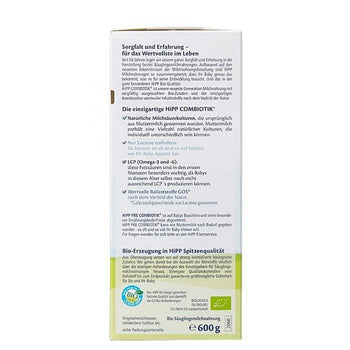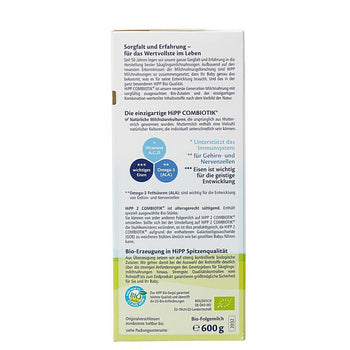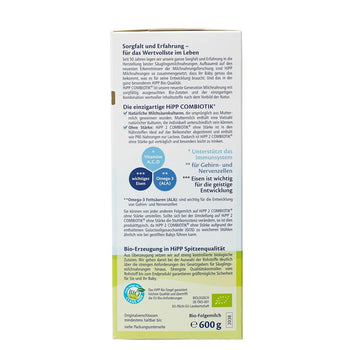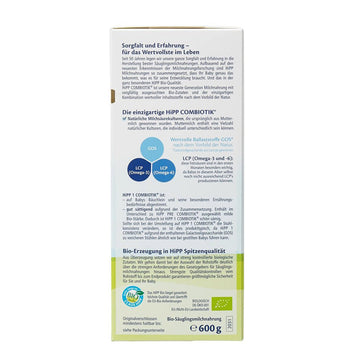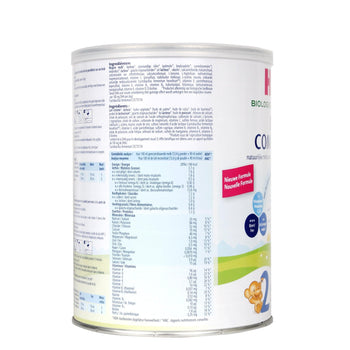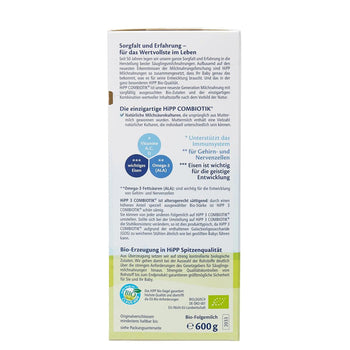Table of Contents
- Introduction
- Key Formula Safety Facts
- How Safety is Defined for Infant Formula
- What "Organic" Means in Practice
- Safety Protocols from Farm to Bottle
- Safe Preparation, Handling, and Storage for Parents
- Myths vs. Facts About Formula Safety
- How Euromall Helps Parents Shop Safely
- Expert Perspective
- How We Vetted Safety Standards
- Frequently Asked Questions
- Peace of Mind Through Informed Choices
Introduction
Choosing to formula feed your baby can feel overwhelming, especially with recent news about contaminants and recalls. You want to make the safest choice for your little one, and that's completely natural. The good news? Modern baby formula, when properly prepared and sourced from reputable manufacturers, provides safe and complete nutrition for healthy infant development.
↑ Back to topKey Formula Safety Facts
- All FDA-approved formulas meet strict nutritional and safety standards for healthy infant growth
- Organic formulas offer additional protection through cleaner ingredient sourcing and stricter manufacturing standards
- Proper preparation using safe water and sterile equipment prevents most safety risks
- Recent testing shows 21 out of 41 formulas earned "Top Choice" safety ratings with minimal contaminants
- European organic formulas consistently demonstrate superior safety profiles due to stricter regulations
How Safety is Defined for Infant Formula
The FDA requires all infant formulas sold in the United States to meet comprehensive safety and nutritional standards through the Infant Formula Act of 1980. Every formula must contain exactly 30 specified nutrients within precise minimum and maximum ranges, ensuring complete nutrition for babies from birth to 12 months.
Current Safety Requirements Include:
- Microbiological testing for harmful bacteria like Salmonella and Cronobacter sakazakii
- Good Manufacturing Practices to prevent contamination during production
- Nutritional adequacy testing to verify proper vitamin, mineral, and macronutrient levels
- Mandatory facility inspections and quality control systems
In 2025, the FDA launched Operation Stork Speed, a comprehensive initiative to enhance formula safety through increased contaminant testing, improved transparency, and stricter manufacturing oversight. This includes the first comprehensive nutrient review since 1998, demonstrating the agency's commitment to continuously improving formula safety standards.

What "Organic" Means in Practice
USDA Organic certification for baby formula requires that at least 95% of ingredients come from certified organic sources. This means:
Organic Ingredient Standards:
- No synthetic pesticides or herbicides are used in farming
- No genetically modified organisms (GMOs)
- No artificial growth hormones or antibiotics in dairy sources
- No synthetic preservatives or artificial flavors
Additional Organic Benefits:
- Cleaner carbohydrate sources: Organic formulas primarily use lactose rather than corn syrup
- Grass-fed dairy sources: Cows have access to pasture and organic feed
- Environmental sustainability: Farming practices that protect soil and water quality
- Third-party verification: Regular inspections ensure compliance with organic standards
European organic standards often exceed USDA requirements, with stricter limits on contaminants and mandatory inclusion of beneficial nutrients like DHA (omega-3 fatty acids essential for brain development).
↑ Back to topSafety Protocols from Farm to Bottle
Premium formula manufacturers implement comprehensive safety measures throughout the entire production process:
Ingredient Sourcing:
- Farm certifications ensure organic practices and environmental standards
- Raw material testing before ingredients enter production facilities
- Supplier audits and quality agreements for consistent safety standards
- Traceability systems track ingredients from farm to finished product
Manufacturing Controls:
- Sterile production environments with continuous air quality monitoring
- Batch testing for pathogens, contaminants, and nutritional accuracy
- Quality control checkpoints at every stage of production
- Employee training on hygiene and contamination prevention
Leading European brands like HiPP conduct over 260 safety checks per batch, including independent laboratory testing that exceeds regulatory requirements. This comprehensive approach ensures that potential contamination is detected and prevented before products reach families.
Microbiological Safety:
Modern formula facilities implement strict protocols to prevent bacterial contamination, particularly focusing on Cronobacter sakazakii, which can be dangerous for vulnerable infants. These include environmental monitoring, product testing, and immediate response procedures if any contamination is detected.
↑ Back to topSafe Preparation, Handling, and Storage for Parents
Proper formula preparation is just as important as choosing a safe product. Follow these evidence-based steps to minimize risks:
Formula Preparation Safety Checklist
Before You Begin:
- Wash your hands thoroughly with soap and water for at least 20 seconds
- Clean your workspace with a disinfectant solution
- Check expiration dates on both formula and bottled water
- Inspect formula powder for unusual color, odor, or clumping
Water Safety:
- Use safe water sources: Municipal tap water, boiled and cooled water, or low-fluoride bottled water
- For high-risk babies (under 2 months, premature, or immunocompromised): Use water heated to at least 158°F (70°C) to kill potential bacteria, then cool before feeding
- Avoid hot tap water, which may contain lead or other contaminants
- Test the water temperature on your wrist; it should feel lukewarm, not hot
Mixing Formula:
- Add water first, then powder, following the exact label ratios
- Level powder scoops without packing down
- Mix thoroughly until completely dissolved
- Cool the feeding temperature if using hot water preparation
Storage Guidelines:
- Use the prepared formula within 2 hours at room temperature
- Refrigerate unused portions and use within 24-48 hours (check label)
- Discard any formula left in the bottle after feeding
- Store unopened powder in cool, dry places away from direct sunlight
Travel Safety Tips
When traveling with formula, pack pre-measured powder portions separately from water, use bottled water from trusted sources, and consider ready-to-feed formulas for convenience and safety.
↑ Back to topMyths vs. Facts About Formula Safety
- Myth: Organic formula is automatically safer to prepare. Fact: Organic refers to ingredient sourcing standards. Safe preparation still requires proper water temperature, clean equipment, and correct storage times regardless of formula type.
- Myth: All formulas contain dangerous levels of heavy metals. Fact: Recent Consumer Reports testing found 21 formulas with excellent safety profiles and minimal contaminants. European organic formulas consistently performed best in safety testing.
- Myth: Powdered formula is inherently unsafe. Fact: While powdered formula isn't sterile, proper preparation using appropriate water temperature (especially for high-risk babies) effectively eliminates potential bacteria.
- Myth: Ready-to-feed formula doesn't need safety precautions. Fact: Even sterile ready-to-feed formulas require clean handling, proper storage, and should be used within recommended timeframes once opened.
- Myth: An Expensive formula is always safer. Fact: Price doesn't guarantee safety. Focus on certifications, independent testing results, and manufacturer transparency rather than cost alone.
How Euromall Helps Parents Shop Safely
At EuromallUSA, we understand that formula safety is your top priority. Our commitment to your baby's health includes:
- Authentic European Sourcing: We partner directly with certified European manufacturers like HiPP, Holle, and Kendamil, ensuring you receive genuine products with superior safety standards.
- Quality Verification: Every formula in our collection undergoes rigorous safety verification, including batch tracking and expiration date monitoring. We only stock products from manufacturers with proven safety records and transparent testing protocols.
- Shipping and Storage Excellence: Our climate-controlled storage and expedited shipping ensure formulas maintain their quality and safety from our facility to your home. We provide detailed handling instructions and storage recommendations with every order.
- Expert Support: Our customer service team includes parents who understand your concerns and can provide guidance on formula selection, preparation, and safety questions. [Internal Link Placeholder: Contact Support]
- Educational Resources: We provide comprehensive safety guides, preparation instructions, and ongoing updates about formula safety research to help you make informed decisions.















